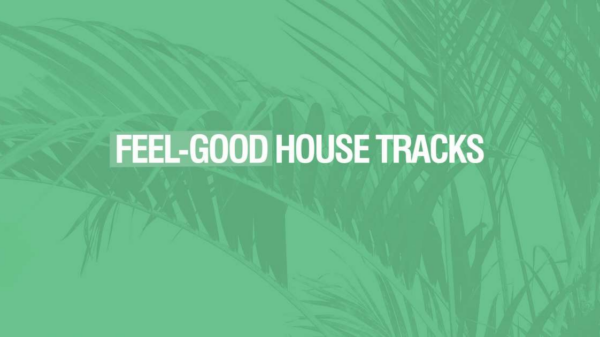Though it didn’t garner the recognition it deserved in its heyday, the legacy of UK funky can be felt nearly everywhere these days. Will Gulseven has the story.
Ask most early 2000s UK dance music fans about UK funky, and it’s likely they’ll wax nostalgic for a short-lived moment when the genre reigned supreme, citing classics from Crazy Cousinz, Lil Silva, Donae’O and more.
In the mid-to-late 00s, UK funky took over clubs and airwaves with its effervescent and propulsive blend of sounds, fusing house music with elements of genres from across the Black diaspora. However, its rise and fall in the mainstream was fleeting. And many of the genre’s biggest names quickly moved on to other sounds, with some even denouncing it as a genre by 2010 due to a lack of infrastructure in the scene, and a slew of cheesy, copycat chart hits bearing the UK funky label.
In spite of its brief peak, UK funky has shown itself to be anything but a throwback. Its impact has been felt in the UK and beyond ever since, with a crop of new producers who wear their funky influences on their sleeves bubbling up in recent years, and who incorporate elements from a multitude of different styles, creating something fresh and new.
To find out more about the lasting legacy of UK funky, I spoke to some of its most important contributors past and present, mapping out its birth, its influence on today’s club music, and to find out where this under-represented genre is headed in the future.

Photo: Supa D
Supa D was one of UK funky’s earliest proponents and a key player in its inception and popularisation. Previously a jungle DJ before moving on to garage and grime, the foundations of UK funky were laid when he began to spin house sets on his radio shows in 2005.
“At the time, we were playing soulful house and US house, and to begin with everyone used to call it all funky house — even the soulful stuff and broken beat,” Supa remembers. Mid-2000s house tracks like Dennis Ferrer’s remix of Fish Go Deep’s “The Cure and the Cause” and DJ Gregory’s “Don’t Panic” sowed the seeds of UK funky. And as the barriers melted away between the percussive groove of funky house, the syncopation of broken beat and the silky vocals of soulful house, it was clear a new movement was forming — led by a young generation of UK producers like Apple, Tadow, and Fingerprint.
By 2008, UK funky was fast becoming the dominant sound in London’s club scene. With grime promoters coming up against difficulties as a result of the Metropolitan Police’s notoriously racist Form 696 (which required club promoters to detail the music policy of their events and the ethnicity of their clientele), and dubstep moving away from its bassweight roots towards big-room sounds, funky offered a more danceable, sleeker alternative. For London-based producer and DJ Karen Nyame, aka KG — who began producing music while writing essays at university — the stylistic melting pot of UK funky provided fertile ground for creative experimentation.
“When it really started to land for me was around 2008, 2009, where you had that glossier presentation of UK funky spearheaded by Donae’O, Crazy Cousinz, and Perempay, and then the darker side from [artists like] Lil Silva and Hard House Banton,” KG says. “I became so enamoured with the sound.”
Meanwhile in Bristol, Tom Ford — better known as Peverelist — was first exposed to funky while working at the Rooted Records shop in Bristol. “DJs and dancefloors were thirsting for something fresh and less aggy, and those early funky records definitely hit the spot — [they were] vibrant, rhythmic, and very UK sounding,” the Livity Sound Recordings co-founder remembers.
That year, Supa D released his Rinse mix CD; the first officially-released mix to offer an all-UK blend of funky productions. As with jungle, garage and grime DJs before them, funky DJs prided themselves on their exclusives and dubs, and even as I write this piece, it’s impossible to find downloads of some of the tracks on Supa’s Rinse mix.

Photo: Roska
“You didn’t know who any of the artists were, for the most part,” remembers BBC radio host and Future Bounce label owner Jamz Supernova, who spent her younger days as a clubber raving to UK funky across London, Essex, and Ayia Napa. “Mostly it was CDs that you got at the end of the raves. So you’d know the DJs, but the only tracks you could get hold of were ones licenced to compilations.”
“I feel like back then it was [very] DIY,” says Roska, a veteran of the scene whose early releases like “Feeline” and “Elevated Levels” formed an essential part of the UK funky canon. “Everything was original, and it was the blind leading the blind, in a super creative way.”
However, the rough-around-the-edges approach by the genre’s earliest producers, combined with the obsession of UK funky DJs with having the most exclusive tracks, ultimately led to the genre’s undoing.
“People didn’t care about quality, they would make stuff and send it to me straight away because they wanted it to get heard that night,” Supa D says. “At the time, we didn’t care — as long as it was playable, we’d play it, but everything was rushed, not mixed down or mastered.”
At the same time, the predominantly Black artists who were pushing funky on the underground were largely ignored by the music press and the electronic music industry, compounding the difficulty of the scene in gaining widespread prominence.
“They treated us like shit if I’m brutally honest,” Roska says. “It was like history got wiped off, and given to the people that [the press] wanted to have it. As an example, I remember Mixmag doing a live stream with Jackmaster playing funky, and I was like, “Why the fuck have you got Jackmaster playing funky? Why wouldn’t you call one of the funky guys?’ It felt like, ‘We don’t want you because you’re Black, we just want your music.’”
Read our Cover Story: Roska is a UK Dance Music Hall-of-Famer, and a Testament to Consistency

Photo: Jamz Supernova
Supa D also says that while his parties regularly sold-out 1000-capacity venues, while platforming UK artists, they rarely got attention in the UK music press. “Maybe the reason it didn’t get the love it deserved was because it was a Black genre,” Jamz Supernova echos. “Obviously garage was a predominantly Black genre too, but there were a lot of white guys making garage. Whereas funky was a young, 99-percent Black audience. You have to really big up places like Rinse FM because they documented it all with archived sets.”
In terms of the music industry at large, timing was also not on funky’s side, with its peak coinciding with a no-man’s-land of musical formats: not long after vinyl’s dominance began to fade, but before downloads and streaming could allow an independent artist to make a living from their music.
“There were songs that were blowing up in the clubs but they would take so long to put out because there was no infrastructure to put the tracks out as a single. And by the time they got round to releasing it, the momentum had gone,” Jamz says.
While KG’s early tracks saw heavy rotation in clubs and on radio around that time, she laughs when I ask if she saw any royalties from her productions. “What a question! Don’t get me started. The plug wasn’t to be independent and retain creative control. The plug was to get a major label deal, and that’s what all the UK funky artists were gearing towards.” Drawing parallels between grime acts like Dizzee Rascal and Wiley, who started releasing more commercially-minded tracks around the same time, KG adds, “A lot of guys wanted to emulate that, but then that was the thing — if you weren’t trying to then what are you trying to do? Just get played in the club all the time?”
By late 2009, funky had crossed over into the mainstream, with tracks like Crazy Cousinz’ remix of Kyla’s “Do You Mind,” Egypt’s “In The Morning,” and Katy B and Ms Dynamite’s “Lights On” making their mark on the UK charts. Alongside these crossover hits, were tracks like K.I.G.’s “Head, Shoulderz Kneez & Toez,” Gracious K’s “Migraine Skank” and Funky Dee’s “Are You Gonna Bang Doe?” — tracks that combined catchy MC hooks with proto-TikTok style viral dances. Depending on who you ask, however, it was these MC-led tracks which were the final nails in the coffin for funky.
“I remember working in a primary school and the year twos wanted me to put ‘Head, Shoulderz Kneez, and Toez’ on, and they were all doing the dance,” Jamz laughs. “That’s when you knew it had gone too far’. Supa D agrees: “It got too gimmicky [with] this skank and that skank. There wasn’t any quality control, and the gimmicks killed it off.”

Photo: Peverelist
From 2011 onwards, the sound of UK funky began to split off into different permutations, with labels like Hyperdub, Hessle Audio, and Livity Sound incorporating elements of funky with techno, grime, and dubstep, while Roska continued to fly the flag with a whole new crop of producers, including DJ Polo, Murder He Wrote and Motu, who began releasing on his RKS label.
“[A lot of producers] definitely got disheartened around that time,” Roska says. “But where a lot of artists gave up, it was a blessing and a curse, because it meant that new artists could come through. So during that period where people started quitting, [people like] Funkystepz and Champion started thriving.”
DJs across Bristol also began working UK funky into their sets, blending it with UK garage, house, techno, and footwork, “and mixing [funky] with deeper or more percussion-based dubstep,” Peverelist remembers.
This open-format approach led Peverelist, Kowton and Asusu to start Livity Sound in 2011, and the influence of funky has remained strong throughout the label’s 10-year history. “Livity Sound definitely isn’t a UK funky label, but its influence runs through the label’s veins,” says Peverelist, emphasising the transformative effect of funky on Bristol’s club scene as a whole. “[Funky] has never gone away here, and has been a staple sound across the city’s dancefloors since it started.”
Although funky was left in the doldrums for a few years as audiences moved on to different sounds, by the mid-2010s a new generation of DJs and producers began to rediscover and redevelop the sound. It’s at this point that definitions between subgenres become murky, and it would be a vast oversimplification to label much of the music mentioned from here on out solely as UK funky. However, funky’s influence on DJs and producers making percussion-driven club music since 2015 has been undeniable both in the UK and beyond. And its mergence with genres like gqom at the hands of producers like Scratcha DVA, KG, Hagan, and Tribal Brothers has led to some of the most compelling electronic music of recent years.

Photo: Karen Nyame (aka KG)
Some of the most exciting developments in the mid-2010s came from labels like TSVI and Wallwork’s Nervous Horizon, as well as More Time Records, which was founded by Ahadadream and Sam Interface. All the aforementioned artists have been emphatic about UK funky’s influence on their music, but each enriched the funky blueprint by drawing on sounds from the Arab world, South Asia, Southern Africa, West Africa and the Caribbean. For instance, it was heavy use of Arabic and Middle Eastern percussion in Nervous Horizon releases that led to the label to link up with Sydney’s DJ Plead, who had coincidentally been taking the same approach in his music around that time.
“I knew what the sound of funky was, but I didn’t have a term for it before about 2017, so it was very new to me as a concept,” recalls Plead. “I did this remix on my Soundcloud of this Egyptian guy, and people described it as UK funky. Once that happened, I looked into what UK funky was, and it was like, ‘Ah, it’s this stuff I’ve been wanting to make.’’’ With stylistic developments like these, which echo the cultural crossovers that led to the development of UK funky the first time around, it feels as though a new branch of the funky family tree is in bloom.
It’s impossible to talk about percussion-driven club music during the mid-to-late 2010s without mentioning gqom, the South African electronic genre that grew out of Durban in the early 2010s, but was largely brought to the attention of European listeners by labels like Gqom Oh! and Hyperdub from around 2016 onwards. The rolling moodiness of gqom was ripe for crossing over with the dynamic percussion and heavy bass of UK funky, and artists like Tribal Brothers, Scratcha DVA, KG and others began working elements of gqom into their tracks on releases like Scratcha and KG’s Touch EP, and Tribal Brothers’ Rebellion EP.
In fact, one of the first labels to introduce gqom pioneer DJ Lag to UK listeners was Goon Club Allstars, who also played a decisive role in relaunching the career of KG. Although several of KG’s tracks had made their mark on the underground during the original funky era, she stepped back from making music due to disillusionment with the music industry until Goon Club Allstars approached her in 2017 with the idea of giving her tracks “808” and “Midnight” a re-release with brand new remixes. “I could never have anticipated what was to come when those tracks dropped,” says KG, recalling the reaction to the re-released tracks. “These were 10 to 12-year-old tracks straight off of Fruity Loops.” The renewed interest in her music led to a string of releases and collaborations, and established her among the most important artists working in the UK of late.
Jamz Supernova, whose raucous club sets are filled with all kinds of percussion-driven music from across the world, points to the influence of Portuguese collectives like Enchufada in bringing her back to many of the UK funky classics that she’d grown up raving to. “In a convoluted way, discovering the global club scene led me back to funky,” she says, “and I became friends with people like Mina who were mixing funky into their sets too, which made me go back and build up my funky folders.”

Photo: DJ Plead

Photo: DJ Polo
DJ Polo, for his part, was also invigorated by sounds coming out of Portugal: “I could hear the influence of Marfox and the kuduro guys, Branko and Enchufada in [labels like] More Time.” This influence has come full circle, says Jamz, with artists from outside the UK often mentioning funky when she plays abroad. “I think there’s so many people outside the UK who are very inspired by funky. I love Kaval and the XXIII guys in Portugal, and there’s definitely a thread of funky in their music.”
More recently, UK artists have been turned on to the sound of amapiano, another genre with its roots in South Africa. A slower, more soulful take on house music, amapiano has surged in popularity among UK listeners, and producers in the UK have already begun to take elements of Amapiano to create their own take on the genre — sometimes dubbed UK ama or funky ama. DJ Polo points to these kinds of hybrids as being a potential “Wot Do U Call It?” moment — something Scratcha DVA referred to as “funky 2.0” in a recent interview between the two artists.
“Scratcha described it as ‘funky 2.0’ because it’s not UK funky,” DJ Polo says. “It’s taking influence from gqom, amapiano, kuduro, and even grime, and all being blurred together. I’d like for it to become its own thing, so it wouldn’t have to be put under the bracket of UK funky. A lot of the time when people ask what I make, I just say ‘percussive music’ because I don’t know what to call it anymore.”
Supa D, meanwhile, is keen to highlight the exciting potential of UK artists collaborating with South Africa’s amapiano pioneers through his label Housupa. “We’re in touch with [artists] from South Africa, so we’re trying to set up collabs with them. We want it all to cross over so they know about us, and we know about them.”
This two-way creativity is vital, agrees Roska, for any crossovers to be productive and to avoid the potential for appropriation. “It’s great that people are playing amapiano here, but we need to make sure that the guys who made that sound are getting their flowers. We need to make sure there’s dialogue and understanding between different countries [so that we aren’t] just taking something from them, interpreting it into our own thing, and fucking off.”
The influence of UK funky on modern club music is unarguable, and its reach has extended around the world. A decade after its days as an underground UK genre that, for a variety of reasons, failed to properly ignite, its since become the backbone of some of today’s most cutting edge global dance music — whether that’s the percussive UK techno of Livity Sound, the Arabic-inflected grooves of DJ Plead, or gqom and amapiano-tinged rollers of Tribal Brothers and KG.
Despite these creative new heights, it’s also imperative to remember the work done by the original UK funky artists. While funky has been relegated to a nostalgia genre among some listeners, material from the likes of Apple and Lil Silva still sounds as fresh and forward-thinking as it did the first time round.
As for the future, KG perhaps sums it up best: “I don’t feel like UK funky ever died, it was just reworked — you can hear remnants of it in everything. It’s a really exciting time. You can look at something and say, ‘It’s not UK funky, but it has the same feel, and whatever it is, I like it.’’’
Words: Will Gulseven
Ask most early 2000s UK dance music fans about UK funky, and it’s likely they’ll wax nostalgic for a short-lived moment when the genre reigned supreme, citing classics from Crazy Cousinz, Lil Silva, Donae’O and more.
In the mid-to-late 00s, UK funky took over clubs and airwaves with its effervescent and propulsive blend of sounds, fusing house music with elements of genres from across the Black diaspora. However, its rise and fall in the mainstream was fleeting. And many of the genre’s biggest names quickly moved on to other sounds, with some even denouncing it as a genre by 2010 due to a lack of infrastructure in the scene, and a slew of cheesy, copycat chart hits bearing the UK funky label.
In spite of its brief peak, UK funky has shown itself to be anything but a throwback. Its impact has been felt in the UK and beyond ever since, with a crop of new producers who wear their funky influences on their sleeves bubbling up in recent years, and who incorporate elements from a multitude of different styles, creating something fresh and new.
To find out more about the lasting legacy of UK funky, I spoke to some of its most important contributors past and present, mapping out its birth, its influence on today’s club music, and to find out where this under-represented genre is headed in the future.
Check out our UK funky playlist on Beatport.
Photo: Supa D
Supa D was one of UK funky’s earliest proponents and a key player in its inception and popularisation. Previously a jungle DJ before moving on to garage and grime, the foundations of UK funky were laid when he began to spin house sets on his radio shows in 2005.
“At the time, we were playing soulful house and US house, and to begin with everyone used to call it all funky house — even the soulful stuff and broken beat,” Supa remembers. Mid-2000s house tracks like Dennis Ferrer’s remix of Fish Go Deep’s “The Cure and the Cause” and DJ Gregory’s “Don’t Panic” sowed the seeds of UK funky. And as the barriers melted away between the percussive groove of funky house, the syncopation of broken beat and the silky vocals of soulful house, it was clear a new movement was forming — led by a young generation of UK producers like Apple, Tadow, and Fingerprint.
By 2008, UK funky was fast becoming the dominant sound in London’s club scene. With grime promoters coming up against difficulties as a result of the Metropolitan Police’s notoriously racist Form 696 (which required club promoters to detail the music policy of their events and the ethnicity of their clientele), and dubstep moving away from its bassweight roots towards big-room sounds, funky offered a more danceable, sleeker alternative. For London-based producer and DJ Karen Nyame, aka KG — who began producing music while writing essays at university — the stylistic melting pot of UK funky provided fertile ground for creative experimentation.
“When it really started to land for me was around 2008, 2009, where you had that glossier presentation of UK funky spearheaded by Donae’O, Crazy Cousinz, and Perempay, and then the darker side from [artists like] Lil Silva and Hard House Banton,” KG says. “I became so enamoured with the sound.”
Meanwhile in Bristol, Tom Ford — better known as Peverelist — was first exposed to funky while working at the Rooted Records shop in Bristol. “DJs and dancefloors were thirsting for something fresh and less aggy, and those early funky records definitely hit the spot — [they were] vibrant, rhythmic, and very UK sounding,” the Livity Sound Recordings co-founder remembers.
That year, Supa D released his Rinse mix CD; the first officially-released mix to offer an all-UK blend of funky productions. As with jungle, garage and grime DJs before them, funky DJs prided themselves on their exclusives and dubs, and even as I write this piece, it’s impossible to find downloads of some of the tracks on Supa’s Rinse mix.
Photo: Roska
“You didn’t know who any of the artists were, for the most part,” remembers BBC radio host and Future Bounce label owner Jamz Supernova, who spent her younger days as a clubber raving to UK funky across London, Essex, and Ayia Napa. “Mostly it was CDs that you got at the end of the raves. So you’d know the DJs, but the only tracks you could get hold of were ones licenced to compilations.”
“I feel like back then it was [very] DIY,” says Roska, a veteran of the scene whose early releases like “Feeline” and “Elevated Levels” formed an essential part of the UK funky canon. “Everything was original, and it was the blind leading the blind, in a super creative way.”
However, the rough-around-the-edges approach by the genre’s earliest producers, combined with the obsession of UK funky DJs with having the most exclusive tracks, ultimately led to the genre’s undoing.
“People didn’t care about quality, they would make stuff and send it to me straight away because they wanted it to get heard that night,” Supa D says. “At the time, we didn’t care — as long as it was playable, we’d play it, but everything was rushed, not mixed down or mastered.”
At the same time, the predominantly Black artists who were pushing funky on the underground were largely ignored by the music press and the electronic music industry, compounding the difficulty of the scene in gaining widespread prominence.
“They treated us like shit if I’m brutally honest,” Roska says. “It was like history got wiped off, and given to the people that [the press] wanted to have it. As an example, I remember Mixmag doing a live stream with Jackmaster playing funky, and I was like, “Why the fuck have you got Jackmaster playing funky? Why wouldn’t you call one of the funky guys?’ It felt like, ‘We don’t want you because you’re Black, we just want your music.’”
Read our Cover Story: Roska is a UK Dance Music Hall-of-Famer, and a Testament to Consistency
Photo: Jamz Supernova
Supa D also says that while his parties regularly sold-out 1000-capacity venues, while platforming UK artists, they rarely got attention in the UK music press. “Maybe the reason it didn’t get the love it deserved was because it was a Black genre,” Jamz Supernova echos. “Obviously garage was a predominantly Black genre too, but there were a lot of white guys making garage. Whereas funky was a young, 99-percent Black audience. You have to really big up places like Rinse FM because they documented it all with archived sets.”
In terms of the music industry at large, timing was also not on funky’s side, with its peak coinciding with a no-man’s-land of musical formats: not long after vinyl’s dominance began to fade, but before downloads and streaming could allow an independent artist to make a living from their music.
“There were songs that were blowing up in the clubs but they would take so long to put out because there was no infrastructure to put the tracks out as a single. And by the time they got round to releasing it, the momentum had gone,” Jamz says.
While KG’s early tracks saw heavy rotation in clubs and on radio around that time, she laughs when I ask if she saw any royalties from her productions. “What a question! Don’t get me started. The plug wasn’t to be independent and retain creative control. The plug was to get a major label deal, and that’s what all the UK funky artists were gearing towards.” Drawing parallels between grime acts like Dizzee Rascal and Wiley, who started releasing more commercially-minded tracks around the same time, KG adds, “A lot of guys wanted to emulate that, but then that was the thing — if you weren’t trying to then what are you trying to do? Just get played in the club all the time?”
By late 2009, funky had crossed over into the mainstream, with tracks like Crazy Cousinz’ remix of Kyla’s “Do You Mind,” Egypt’s “In The Morning,” and Katy B and Ms Dynamite’s “Lights On” making their mark on the UK charts. Alongside these crossover hits, were tracks like K.I.G.’s “Head, Shoulderz Kneez & Toez,” Gracious K’s “Migraine Skank” and Funky Dee’s “Are You Gonna Bang Doe?” — tracks that combined catchy MC hooks with proto-TikTok style viral dances. Depending on who you ask, however, it was these MC-led tracks which were the final nails in the coffin for funky.
“I remember working in a primary school and the year twos wanted me to put ‘Head, Shoulderz Kneez, and Toez’ on, and they were all doing the dance,” Jamz laughs. “That’s when you knew it had gone too far’. Supa D agrees: “It got too gimmicky [with] this skank and that skank. There wasn’t any quality control, and the gimmicks killed it off.”
Photo: Peverelist
From 2011 onwards, the sound of UK funky began to split off into different permutations, with labels like Hyperdub, Hessle Audio, and Livity Sound incorporating elements of funky with techno, grime, and dubstep, while Roska continued to fly the flag with a whole new crop of producers, including DJ Polo, Murder He Wrote and Motu, who began releasing on his RKS label.
“[A lot of producers] definitely got disheartened around that time,” Roska says. “But where a lot of artists gave up, it was a blessing and a curse, because it meant that new artists could come through. So during that period where people started quitting, [people like] Funkystepz and Champion started thriving.”
DJs across Bristol also began working UK funky into their sets, blending it with UK garage, house, techno, and footwork, “and mixing [funky] with deeper or more percussion-based dubstep,” Peverelist remembers.
This open-format approach led Peverelist, Kowton and Asusu to start Livity Sound in 2011, and the influence of funky has remained strong throughout the label’s 10-year history. “Livity Sound definitely isn’t a UK funky label, but its influence runs through the label’s veins,” says Peverelist, emphasising the transformative effect of funky on Bristol’s club scene as a whole. “[Funky] has never gone away here, and has been a staple sound across the city’s dancefloors since it started.”
Although funky was left in the doldrums for a few years as audiences moved on to different sounds, by the mid-2010s a new generation of DJs and producers began to rediscover and redevelop the sound. It’s at this point that definitions between subgenres become murky, and it would be a vast oversimplification to label much of the music mentioned from here on out solely as UK funky. However, funky’s influence on DJs and producers making percussion-driven club music since 2015 has been undeniable both in the UK and beyond. And its mergence with genres like gqom at the hands of producers like Scratcha DVA, KG, Hagan, and Tribal Brothers has led to some of the most compelling electronic music of recent years.
Photo: Karen Nyame (aka KG)
Some of the most exciting developments in the mid-2010s came from labels like TSVI and Wallwork’s Nervous Horizon, as well as More Time Records, which was founded by Ahadadream and Sam Interface. All the aforementioned artists have been emphatic about UK funky’s influence on their music, but each enriched the funky blueprint by drawing on sounds from the Arab world, South Asia, Southern Africa, West Africa and the Caribbean. For instance, it was heavy use of Arabic and Middle Eastern percussion in Nervous Horizon releases that led to the label to link up with Sydney’s DJ Plead, who had coincidentally been taking the same approach in his music around that time.
“I knew what the sound of funky was, but I didn’t have a term for it before about 2017, so it was very new to me as a concept,” recalls Plead. “I did this remix on my Soundcloud of this Egyptian guy, and people described it as UK funky. Once that happened, I looked into what UK funky was, and it was like, ‘Ah, it’s this stuff I’ve been wanting to make.’’’ With stylistic developments like these, which echo the cultural crossovers that led to the development of UK funky the first time around, it feels as though a new branch of the funky family tree is in bloom.
It’s impossible to talk about percussion-driven club music during the mid-to-late 2010s without mentioning gqom, the South African electronic genre that grew out of Durban in the early 2010s, but was largely brought to the attention of European listeners by labels like Gqom Oh! and Hyperdub from around 2016 onwards. The rolling moodiness of gqom was ripe for crossing over with the dynamic percussion and heavy bass of UK funky, and artists like Tribal Brothers, Scratcha DVA, KG and others began working elements of gqom into their tracks on releases like Scratcha and KG’s Touch EP, and Tribal Brothers’ Rebellion EP.
In fact, one of the first labels to introduce gqom pioneer DJ Lag to UK listeners was Goon Club Allstars, who also played a decisive role in relaunching the career of KG. Although several of KG’s tracks had made their mark on the underground during the original funky era, she stepped back from making music due to disillusionment with the music industry until Goon Club Allstars approached her in 2017 with the idea of giving her tracks “808” and “Midnight” a re-release with brand new remixes. “I could never have anticipated what was to come when those tracks dropped,” says KG, recalling the reaction to the re-released tracks. “These were 10 to 12-year-old tracks straight off of Fruity Loops.” The renewed interest in her music led to a string of releases and collaborations, and established her among the most important artists working in the UK of late.
Jamz Supernova, whose raucous club sets are filled with all kinds of percussion-driven music from across the world, points to the influence of Portuguese collectives like Enchufada in bringing her back to many of the UK funky classics that she’d grown up raving to. “In a convoluted way, discovering the global club scene led me back to funky,” she says, “and I became friends with people like Mina who were mixing funky into their sets too, which made me go back and build up my funky folders.”
Photo: DJ Plead
Photo: DJ Polo
DJ Polo, for his part, was also invigorated by sounds coming out of Portugal: “I could hear the influence of Marfox and the kuduro guys, Branko and Enchufada in [labels like] More Time.” This influence has come full circle, says Jamz, with artists from outside the UK often mentioning funky when she plays abroad. “I think there’s so many people outside the UK who are very inspired by funky. I love Kaval and the XXIII guys in Portugal, and there’s definitely a thread of funky in their music.”
More recently, UK artists have been turned on to the sound of amapiano, another genre with its roots in South Africa. A slower, more soulful take on house music, amapiano has surged in popularity among UK listeners, and producers in the UK have already begun to take elements of Amapiano to create their own take on the genre — sometimes dubbed UK ama or funky ama. DJ Polo points to these kinds of hybrids as being a potential “Wot Do U Call It?” moment — something Scratcha DVA referred to as “funky 2.0” in a recent interview between the two artists.
“Scratcha described it as ‘funky 2.0’ because it’s not UK funky,” DJ Polo says. “It’s taking influence from gqom, amapiano, kuduro, and even grime, and all being blurred together. I’d like for it to become its own thing, so it wouldn’t have to be put under the bracket of UK funky. A lot of the time when people ask what I make, I just say ‘percussive music’ because I don’t know what to call it anymore.”
Supa D, meanwhile, is keen to highlight the exciting potential of UK artists collaborating with South Africa’s amapiano pioneers through his label Housupa. “We’re in touch with [artists] from South Africa, so we’re trying to set up collabs with them. We want it all to cross over so they know about us, and we know about them.”
This two-way creativity is vital, agrees Roska, for any crossovers to be productive and to avoid the potential for appropriation. “It’s great that people are playing amapiano here, but we need to make sure that the guys who made that sound are getting their flowers. We need to make sure there’s dialogue and understanding between different countries [so that we aren’t] just taking something from them, interpreting it into our own thing, and fucking off.”
The influence of UK funky on modern club music is unarguable, and its reach has extended around the world. A decade after its days as an underground UK genre that, for a variety of reasons, failed to properly ignite, its since become the backbone of some of today’s most cutting edge global dance music — whether that’s the percussive UK techno of Livity Sound, the Arabic-inflected grooves of DJ Plead, or gqom and amapiano-tinged rollers of Tribal Brothers and KG.
Despite these creative new heights, it’s also imperative to remember the work done by the original UK funky artists. While funky has been relegated to a nostalgia genre among some listeners, material from the likes of Apple and Lil Silva still sounds as fresh and forward-thinking as it did the first time round.
As for the future, KG perhaps sums it up best: “I don’t feel like UK funky ever died, it was just reworked — you can hear remnants of it in everything. It’s a really exciting time. You can look at something and say, ‘It’s not UK funky, but it has the same feel, and whatever it is, I like it.’’’
Play With Music
All content ©2022 Beatport, LLC unless otherwise specified.
Permission to use quotations from this article is granted subject to appropriate credit being given to Beatport as the source.
Terms of service | Privacy policy
Get in touch:
beatportal@beatport.com










